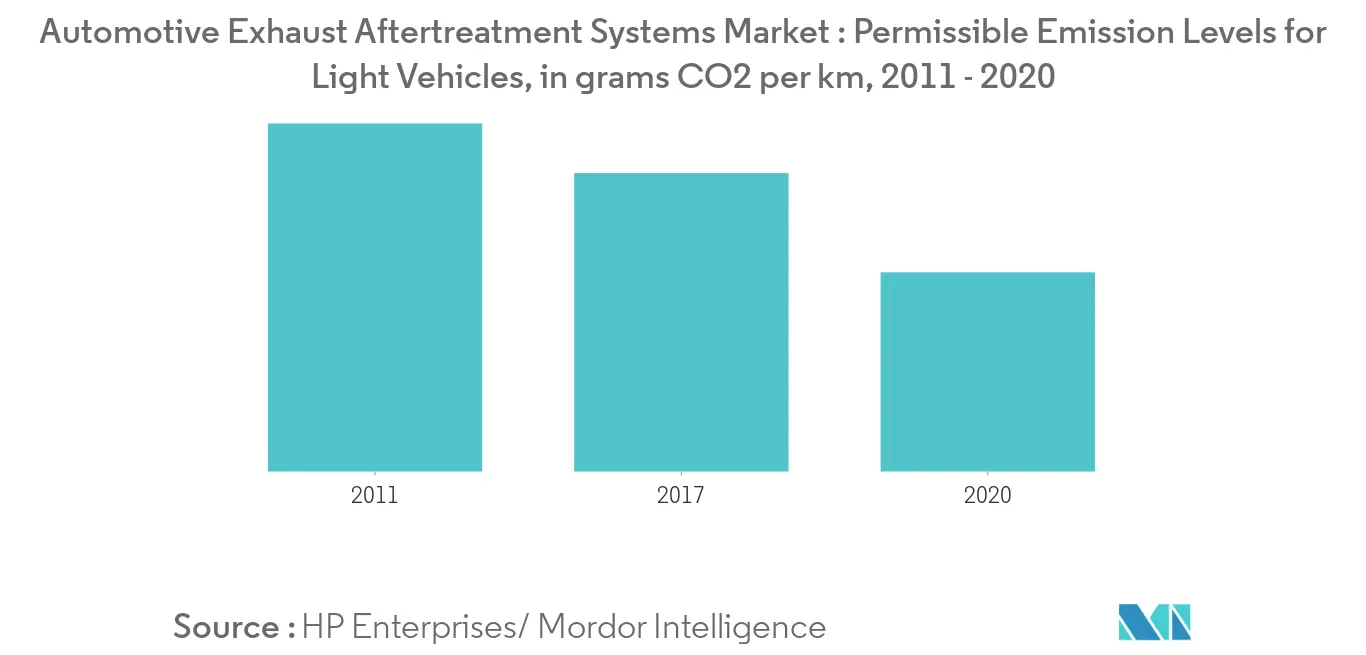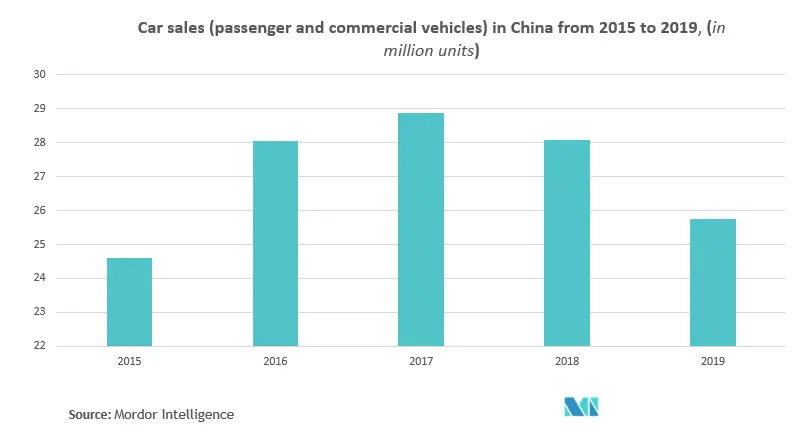Market Trends of Asia-Pacific Automotive Exhaust Aftertreatment Systems Industry
This section covers the major market trends shaping the APAC Automotive Exhaust Aftertreatment Systems Market according to our research experts:
Stringent Emission Regulations Driving the Market
When compared to gasoline, diesel engines operate with much higher efficiency and durability. However, diesel engines are also one of the largest contributors to harmful exhaust emissions causing environmental pollution.
Driven by growing concerns on deteriorating air quality, various policies have been imposed worldwide to reduce effects of diesel engine emissions on human health and environment. Measures are being taken across the globe to adopt and enforce tighter vehicular emission regulations. The main aim is to minimize unburned hydrocarbons, nitrogen oxides (NOx) and particulate matter (PM).
Japan and South Korea have advanced regulations which focus on limiting the pollutant. With improved technology and awareness, the intensity to limit global warming and reduce fossil fuel use in the transportation sectors on the rise. Several Asian nations have pledged to carbon dioxide emissions and impose Carbon tax criteria for greenhouse gases and pollutants emission automotive carmakers. This is leading to the rapid adoption of advanced after treatment technologies.
In order to limit emissions, countries are mandating stricter emission norms to reduce air pollution. In India, the Ministry of Road Transport and Highways has released rules for non-road Bharat Stage (CEV/Trem) IV and V emission standards. Various such measures are being take in an effort make strict emission limits on particulate matter, nitrogen oxide, hydrocarbon, and carbon monoxide.

China Poised to be the fastest-growing market in Asia-Pacific Region
Although advanced diesel Aftertreatment-treatment devices have made a significant mark in the developed countries, other economies such as China have also become a lucrative opportunity for the carmaker of tomorrow.
One of the significant demands for the automotive exhaust system is the rise in air pollution globally. Moreover, China contributes to around 22% of the CO2 emission. When carbon doesn’t burn completely, vehicles emit carbon monoxide. Also, automotive exhaust comprises hydrocarbons, NOX, and other particulate matter.
China is also the world’s largest automotive market, accounting for more than 32% of the global passenger vehicle sales and 15% of the global commercial market sales.
As a result, China targets a reduction of 50% for hydrocarbons, 40% for Nitrogen Oxides (NOx), and 33% for particulate matter over Euro 6 Levels. New gasoline vehicles in China are made mandatory to meet the regulations. All these factors are expected to help the market grow.


